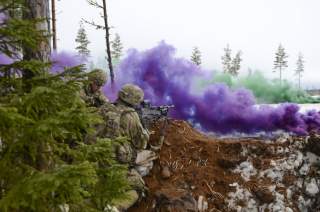Pragmatic Primacy
It's not a miracle cure, but provides the best chance to reestablish America's purpose in a complex world.
HOW WILL the next president promote greater security, prosperity and freedom for the United States, and for its friends and allies around the world? How will the next president choose to lead the country and the world?
The American people are now hearing from the presidential candidates on their foreign-policy visions. Donald Trump proclaims a “philosophy” of authoritarian nationalism (“Make America Great Again”), while Hillary Clinton appears armed with itemized lists of malleable talking points, but little vision. Neither offers a realistic and sustainable strategy for the United States in the twenty-first century.
Promoting and sustaining true American greatness rests on understanding that the challenge is akin to a marathon, not a sprint, that resources are not endless and that the American people will not underwrite foreign conflicts unless vital interests are at stake. It rests on exercising restraint, on choosing commitments carefully, on appreciating that not all humanitarian crises implicate U.S. national security and that not all conflicts have military solutions. It rests on understanding that the United States cannot be all things to all people.
For the past seven and a half years, the United States has had a president skeptical of American exceptionalism, doubtful of its ability to act as a force for good in the world and uncertain that its values are shared and envied by millions of people around the world. The good news is that American leadership is still cherished by many friends and allies; the better news is that they want more, not less, of it. Pragmatic primacy is not a miracle cure, but provides the best chance to reestablish America’s purpose in a complex world.
Barry F. Lowenkron is the former assistant secretary of state for Democracy, Human Rights and Labor at the State Department, 2005–07. Mitchell B. Reiss is the former director of Policy Planning at the State Department, 2003–05.
Image: “As green and purple smoke conceals them, U.S. Army Soldiers, the Iron Troop, with 3rd Squadron, 2nd Cavalry Regiment, stationed out of Vilseck, Germany, set up their positions behind a berm to fire at enemy targets during a live fire exercise at Tapa Training Area, Estonia, Mar. 8-11, 2016. (U.S. Army photo by Staff Sgt. Steven M. Colvin).”

